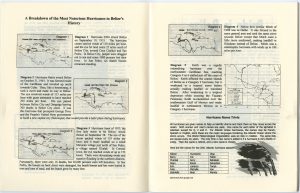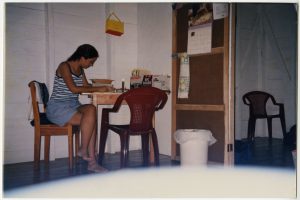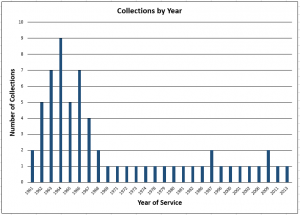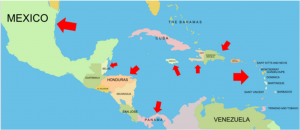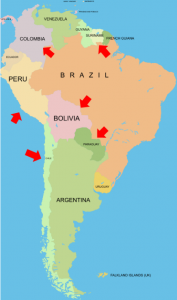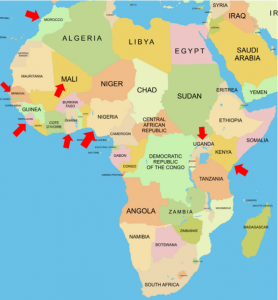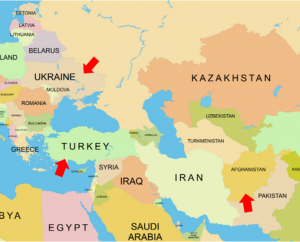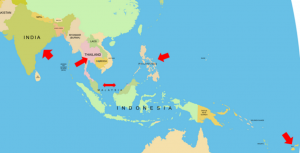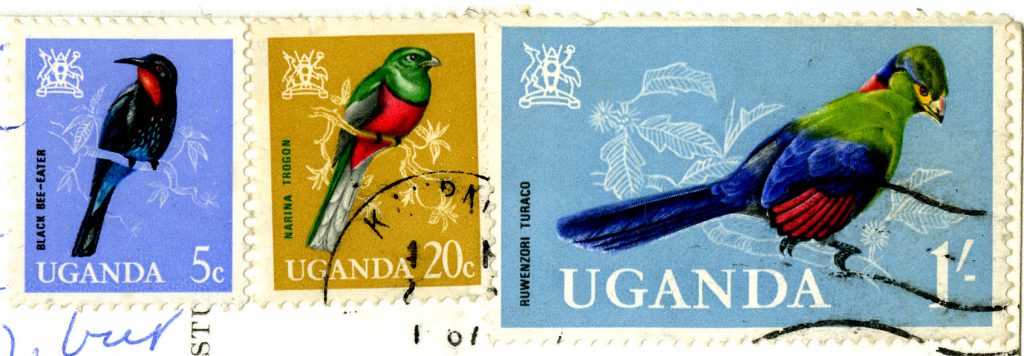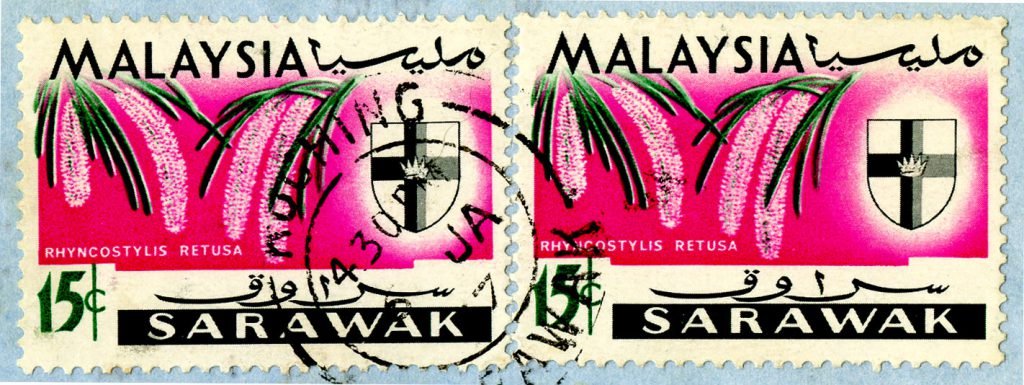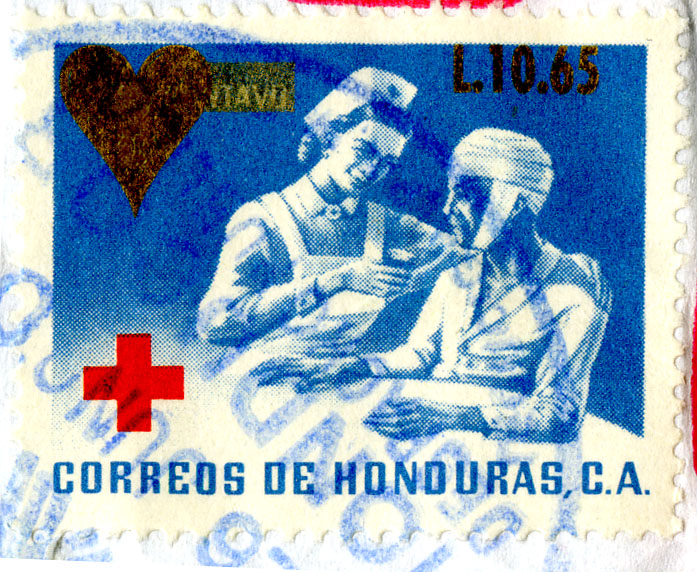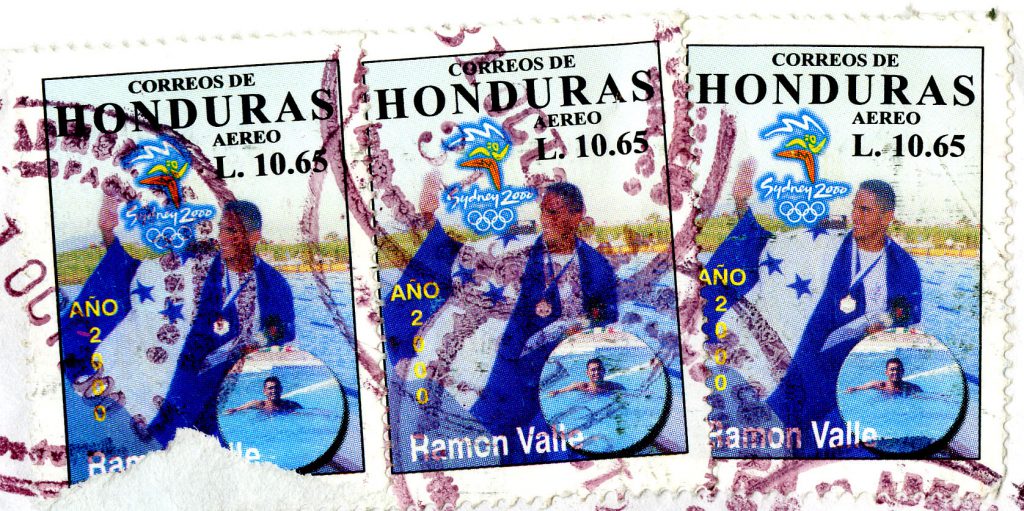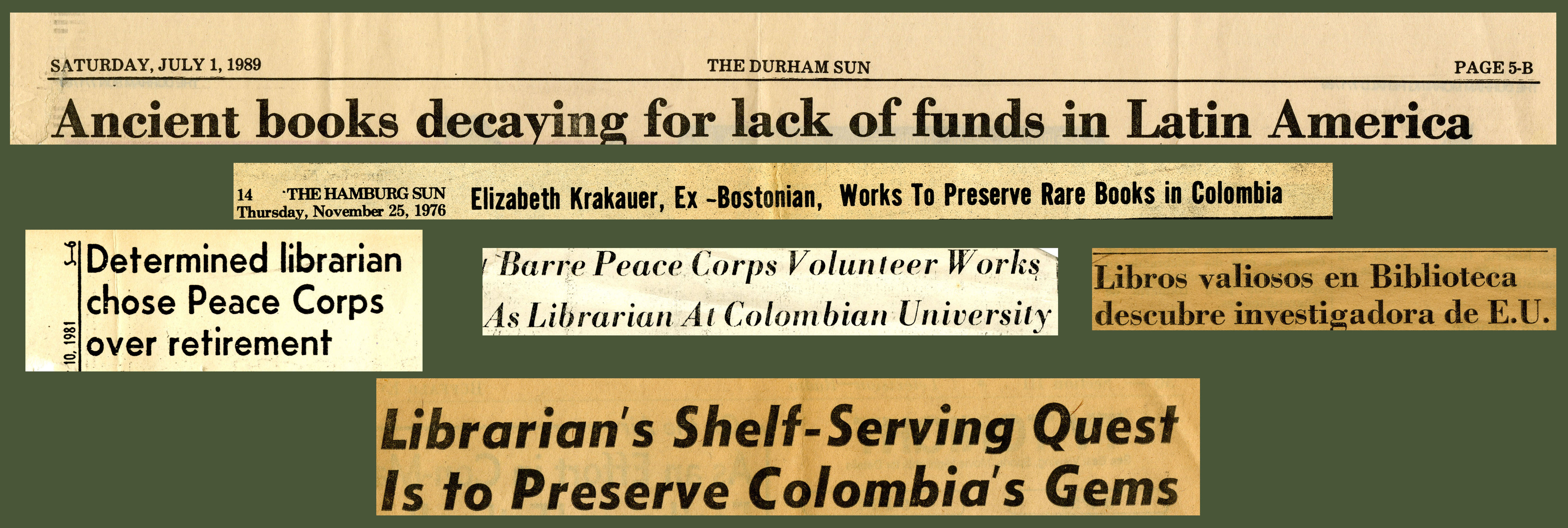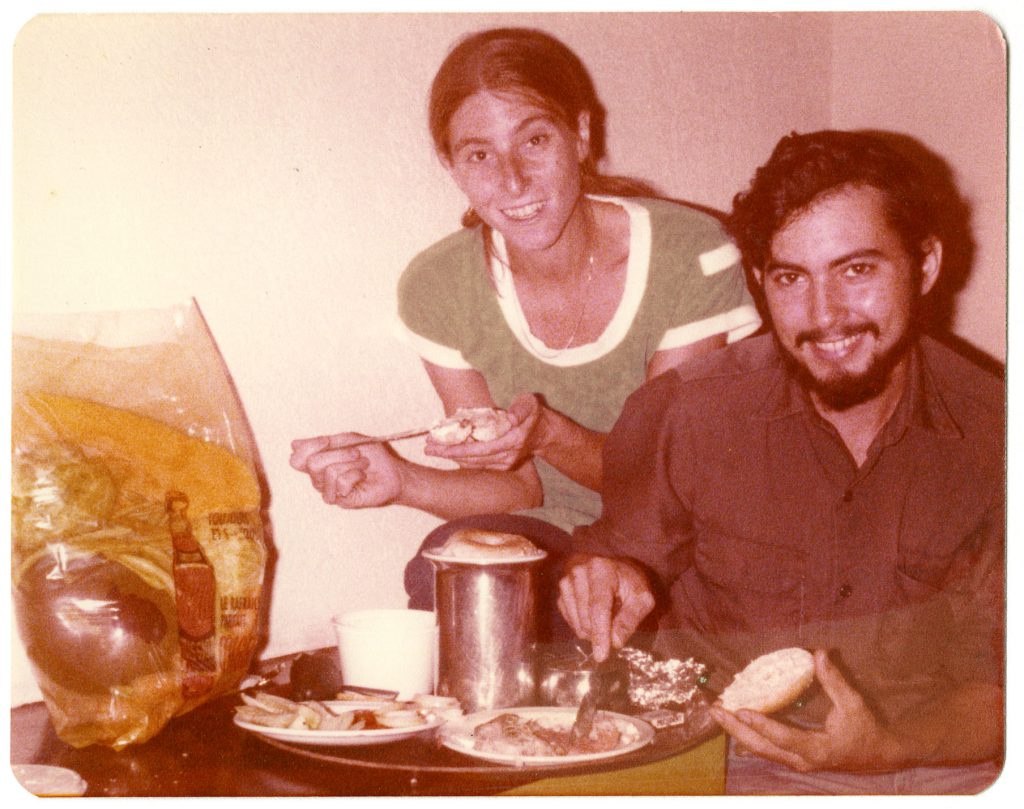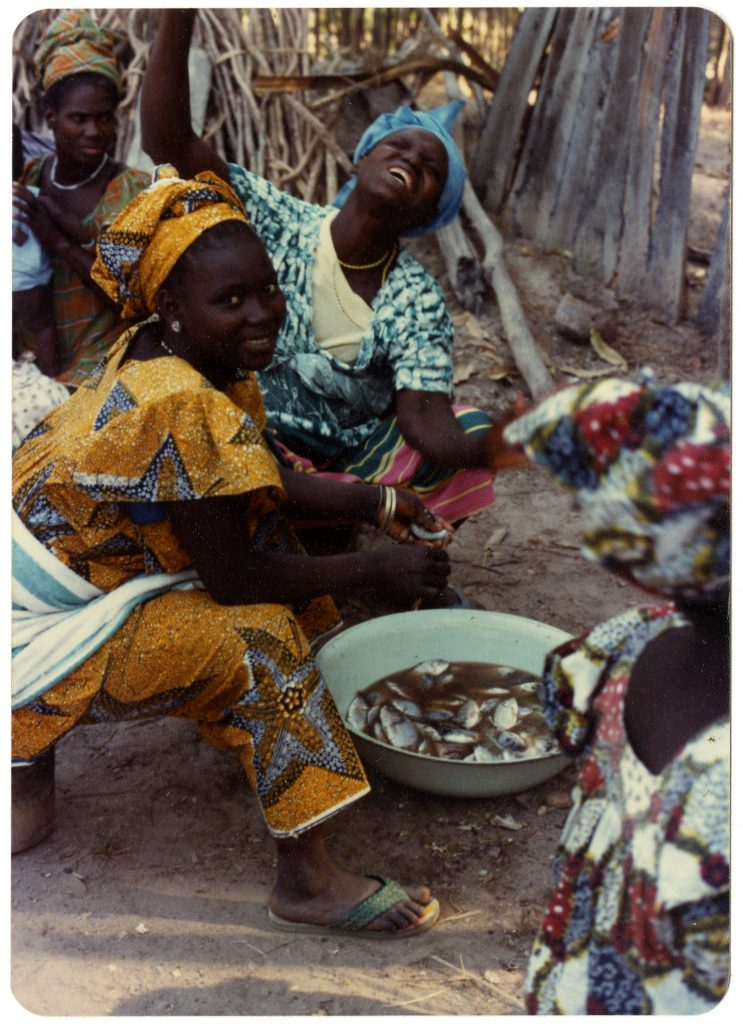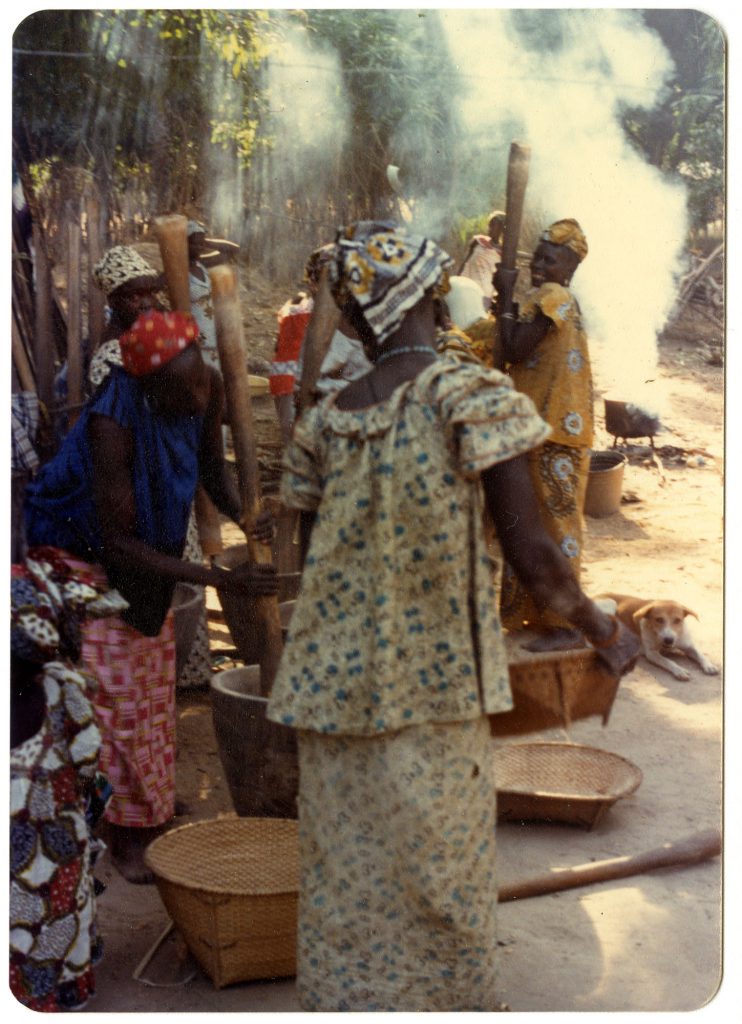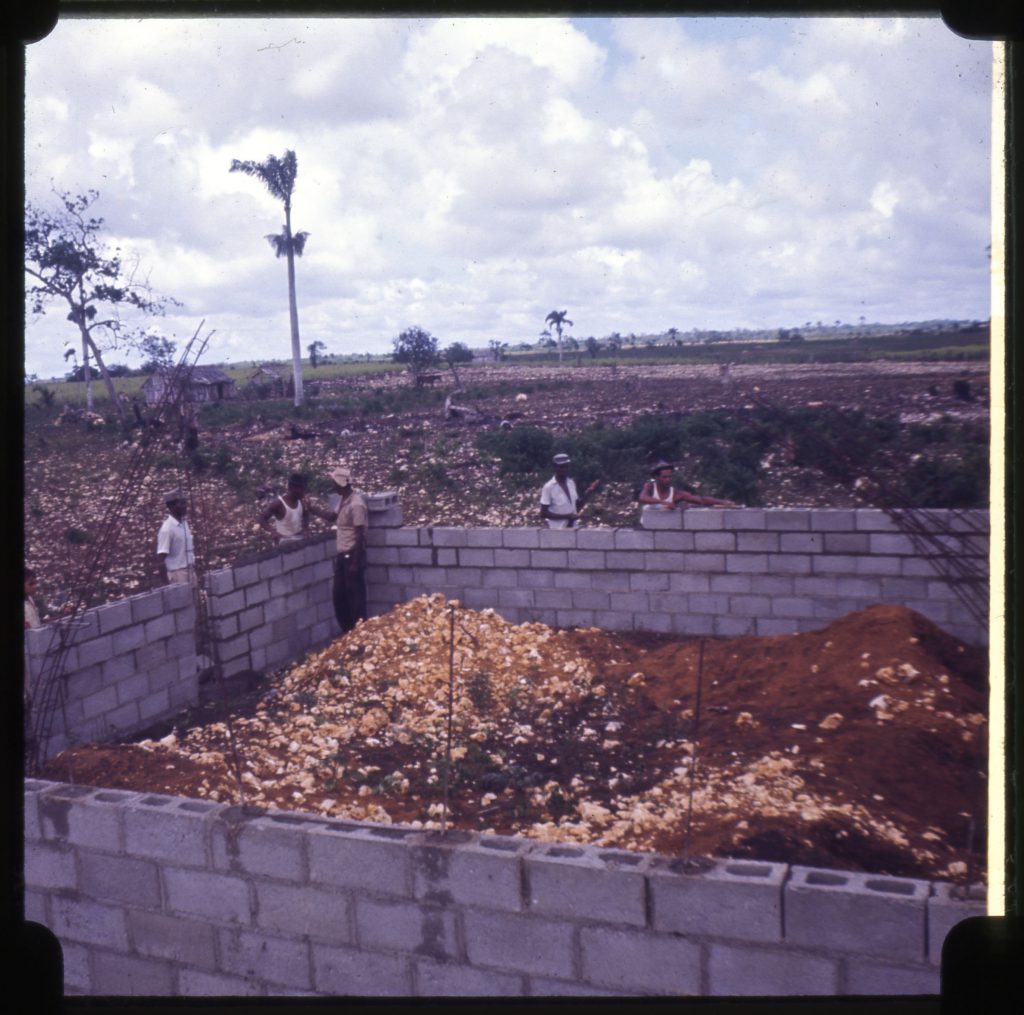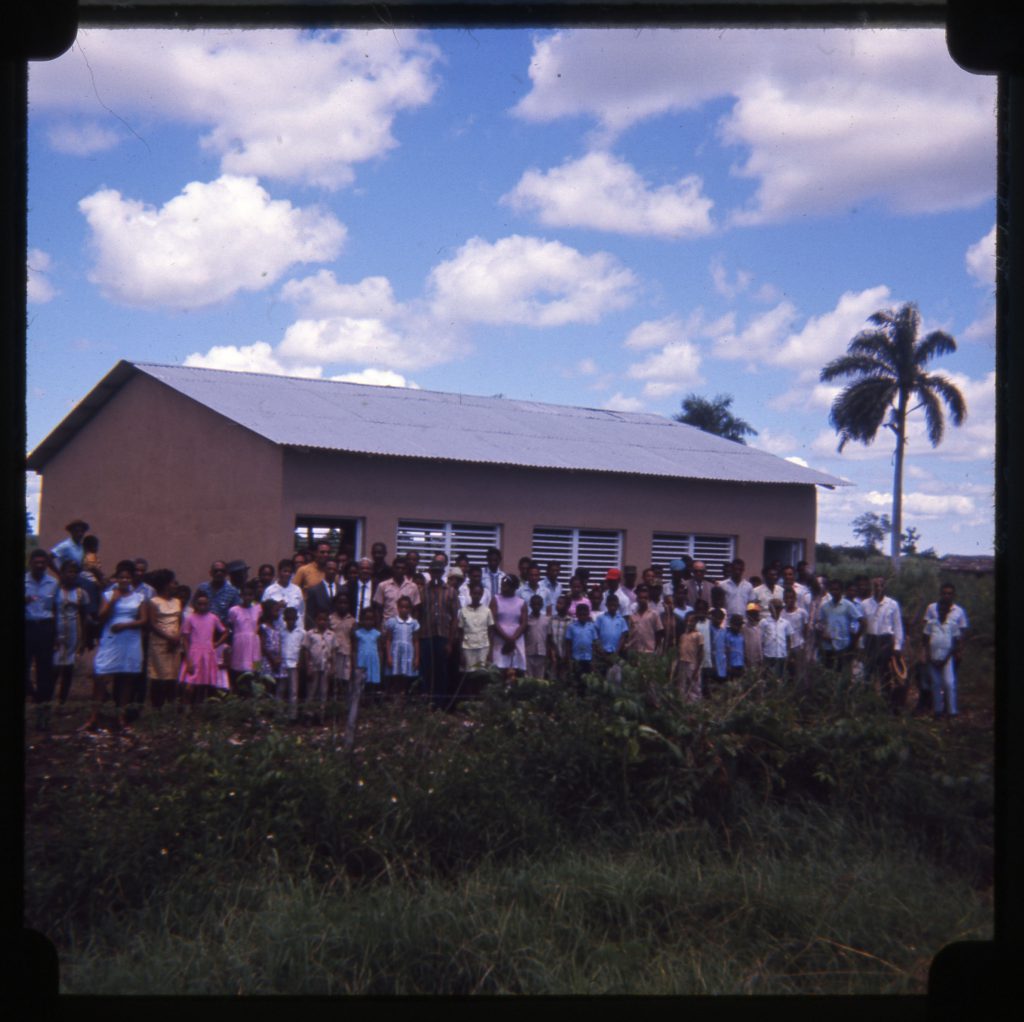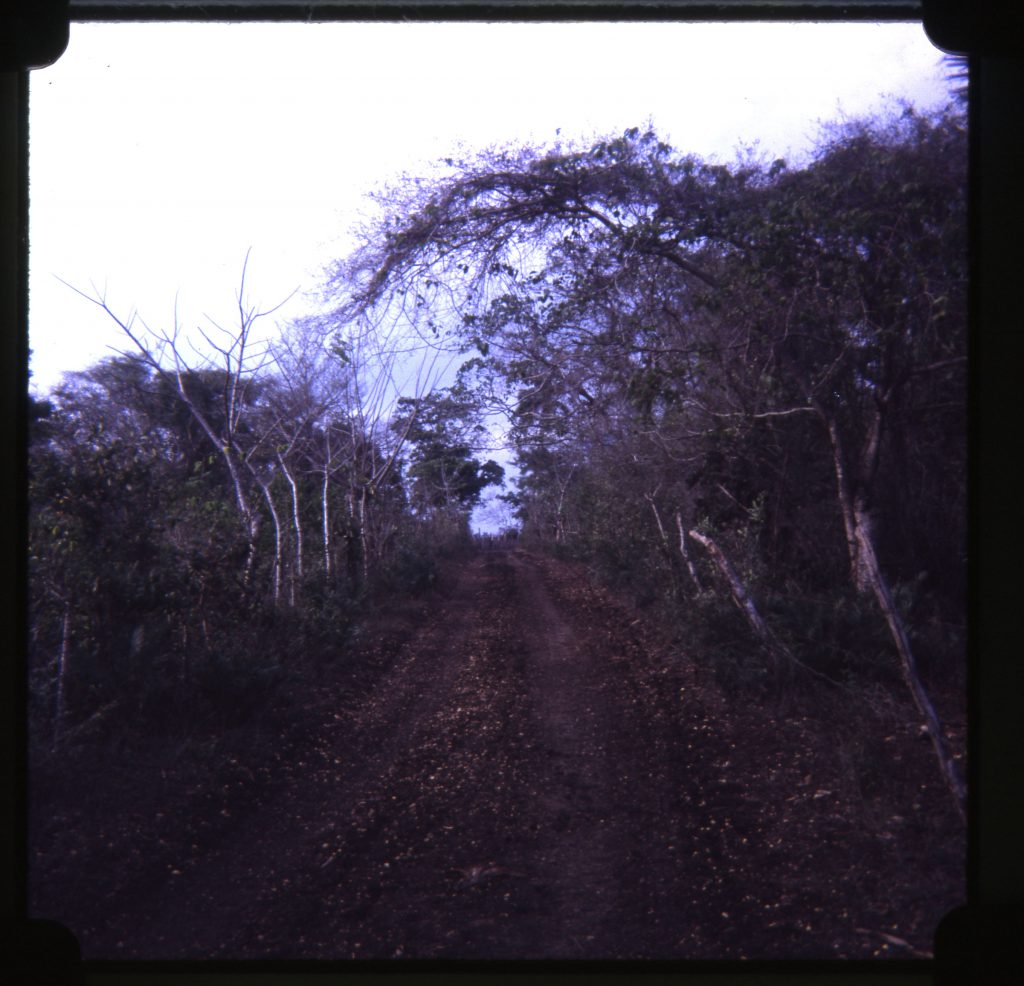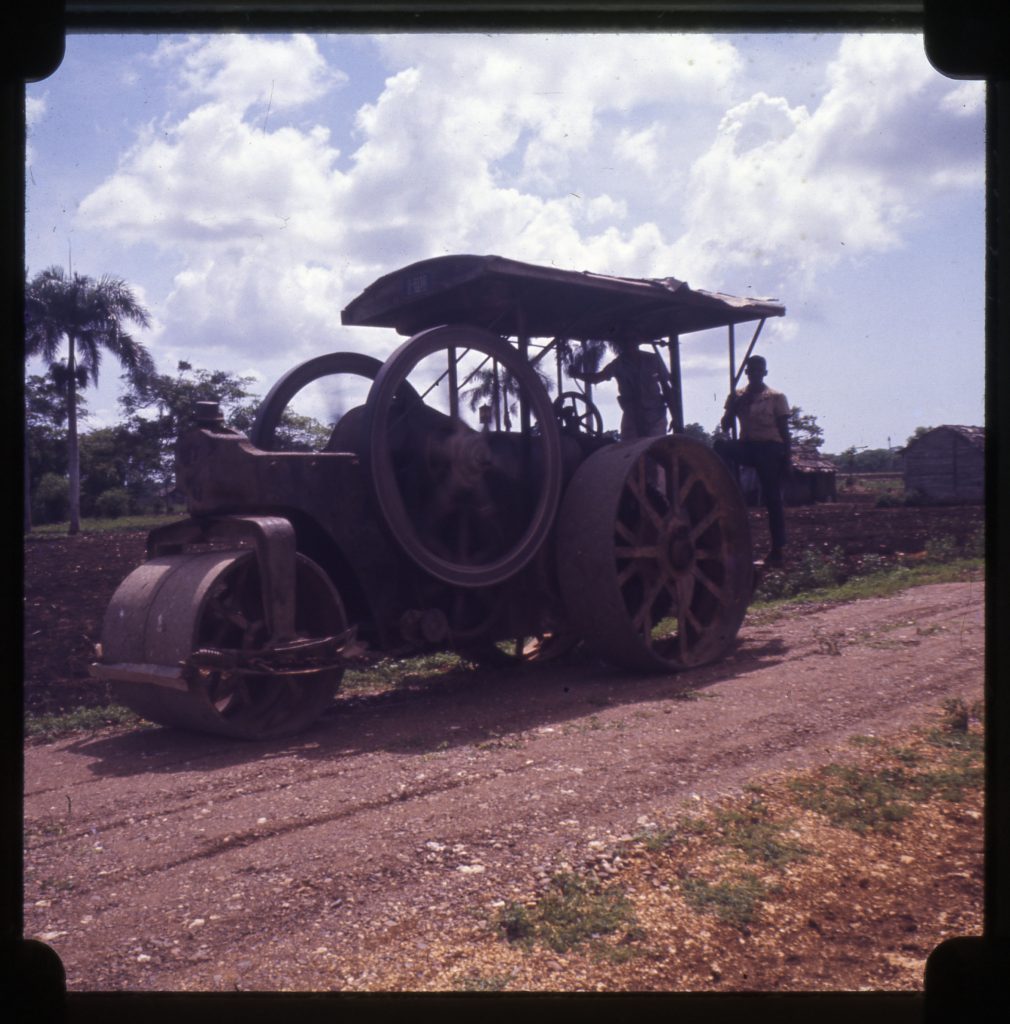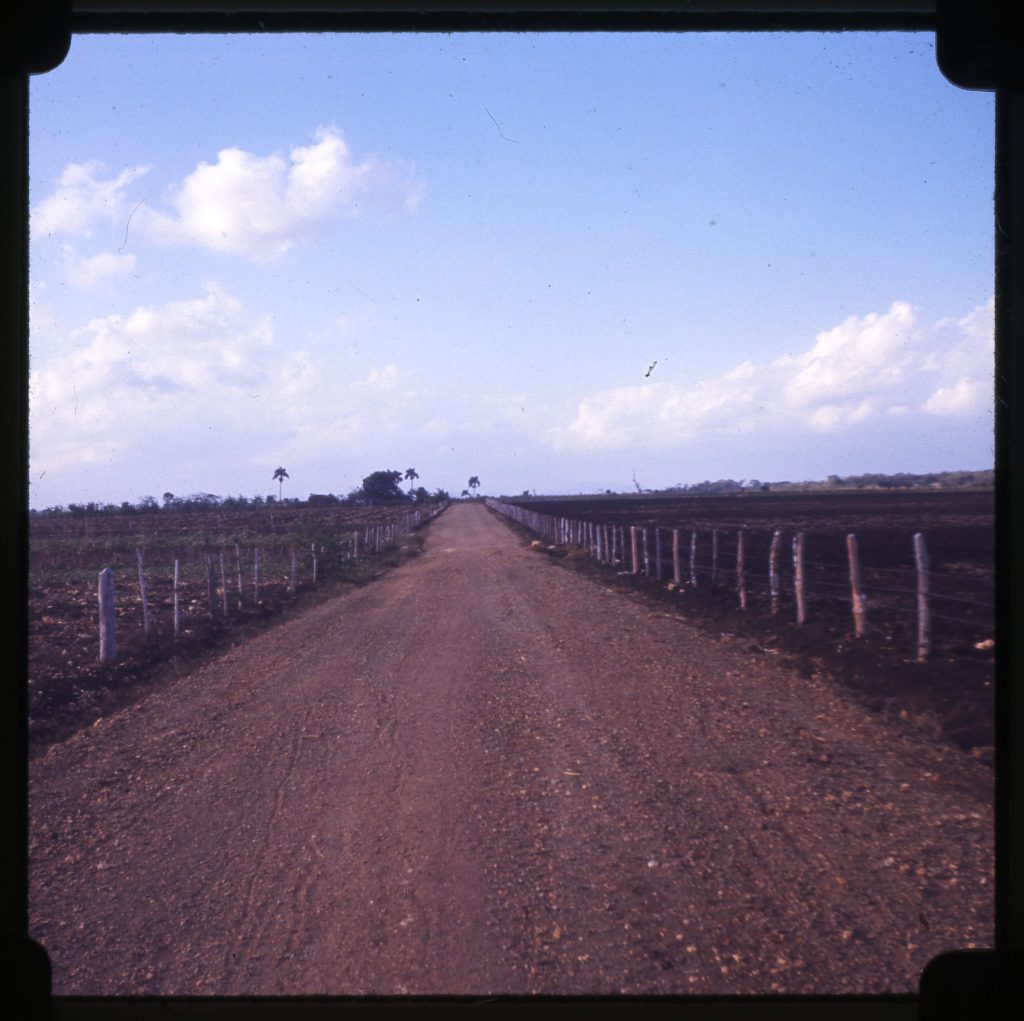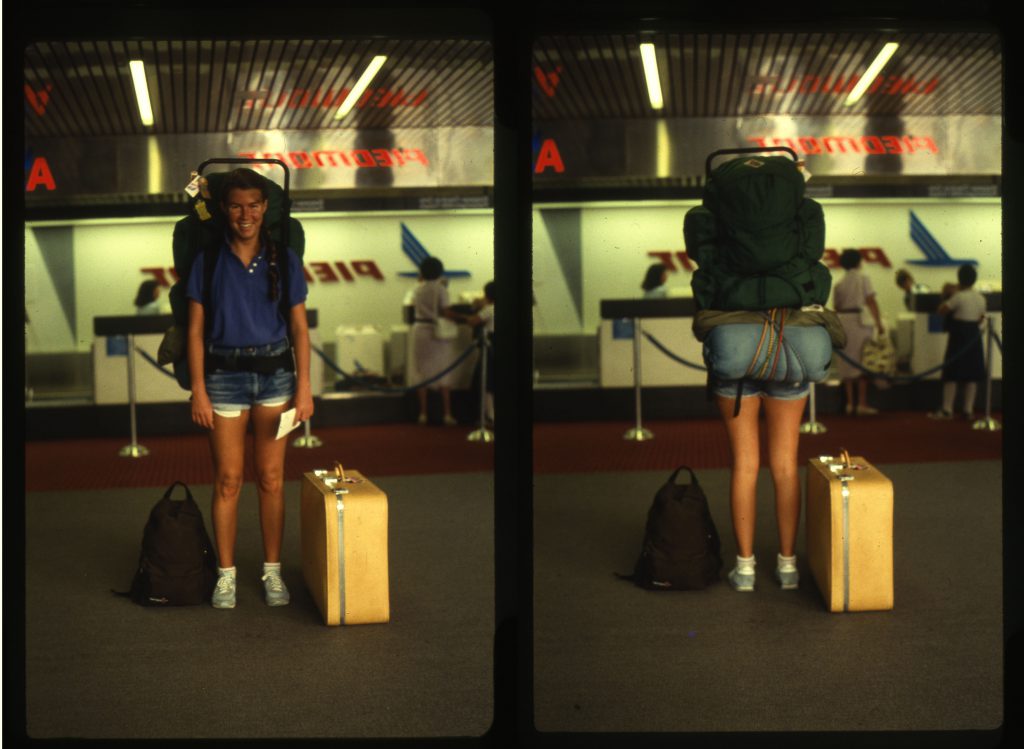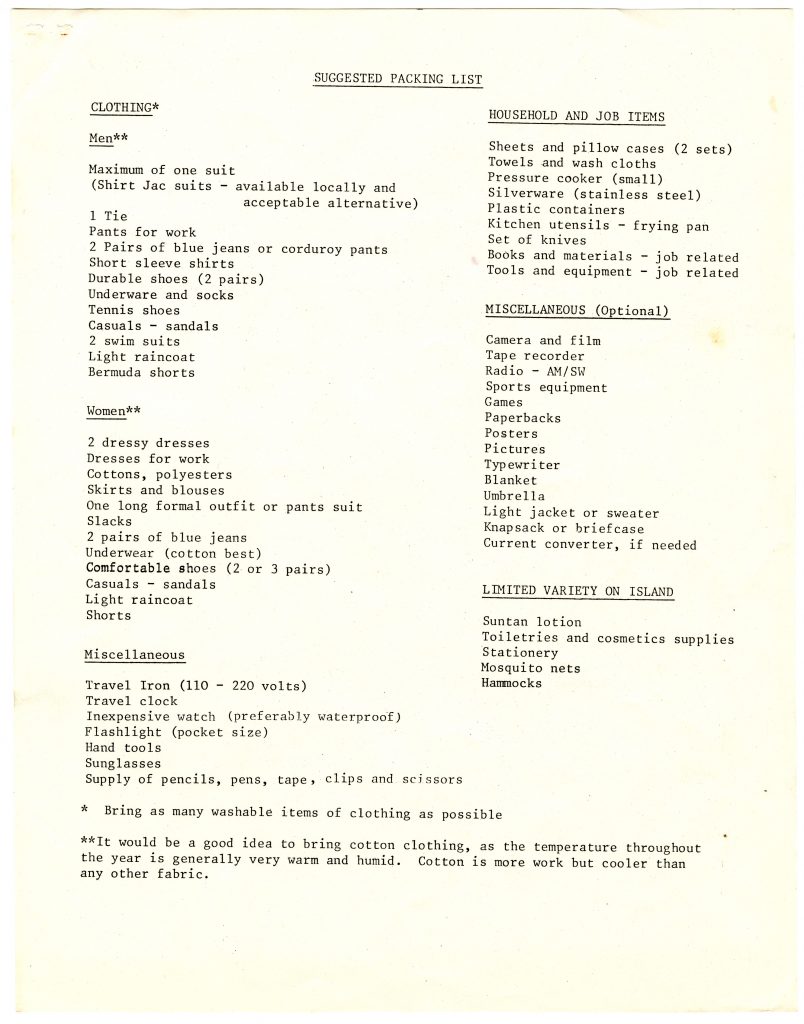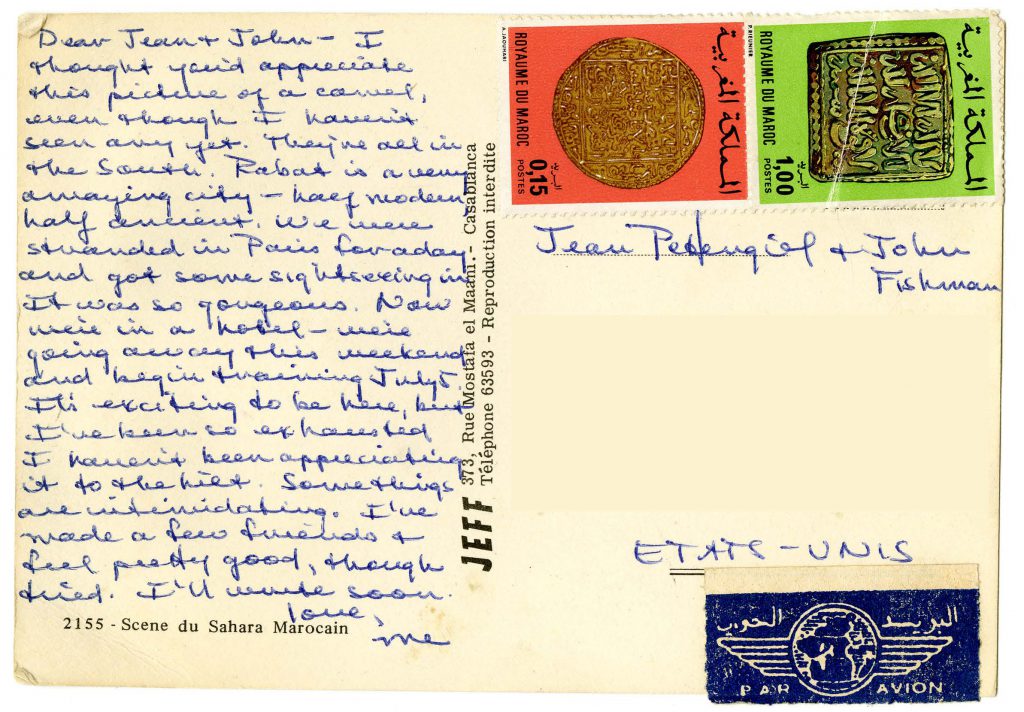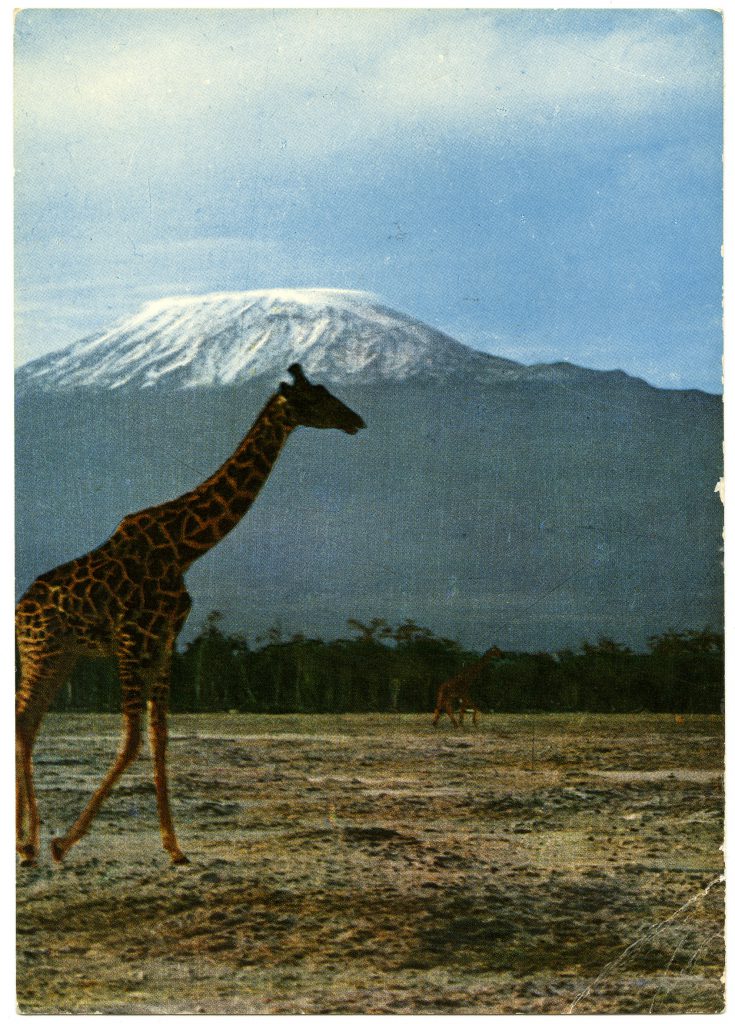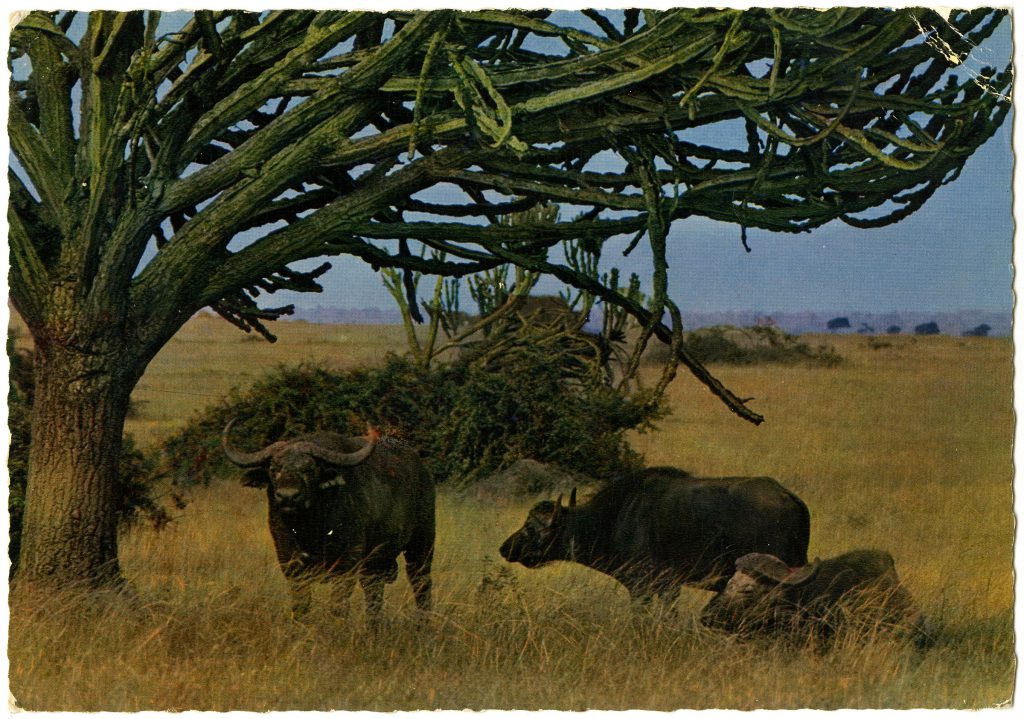Because Peace Corps volunteers serve in areas of the world that can have dangerous weather, they have to be prepared. Current volunteers in the Caribbean, particularly the Dominican Republic, were gathered at the capital for protection, but not evacuated, because of Hurricane Irma in early September, 2017 (according to a Peace Corps volunteer forum).
In October, 2001, Hurricane Iris hit Belize. Iris was a category 4 major hurricane, cost $250 million worth of damage, caused 36 fatalities, and was the most destructive hurricane in Belize since Hurricane Hattie in 1961. The hurricane inflicted the most damage on the Toledo and Stanley Creek districts of Belize. On the outskirts of this area, in Placencia, six weeks into her two year service was Alanna Randall.
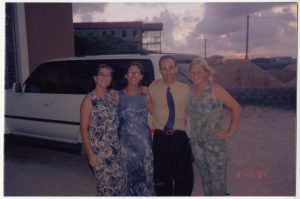
Swearing in, Belize 2001. PCVs Erin McCool, Alanna Randall, and Jessica Walus with APCD Ken Goodson at the PC office in Belize City.
Alanna was in Belize from 2001-2003 as an Environmental Education Coordinator. Before the hurricane she was in Placencia working for Friends of Laughing Bird Caye National Park. However, when Iris hit Belize on October 8th everyone left. She details her return 2 days later in a collection of Peace Corps stories.*
“I barely recognized the village I called home. I almost didn’t recognize the place where my house once stood. Then it hit me. My house is gone! I saw faces numb with disbelief and hopelessness, but I also saw smiles on their faces despite the debris piled high around them.”

PCTs during training in Belize, 2001. San Narciso Village, Corozal, worked on a garden project with school.
Two months later, the Peace Corps magazine of Belize, “Toucan Times,” published a four page spread explaining hurricanes. Two pages detail how hurricanes are formed and facts about them. Two other pages detail hurricanes that had hit Belize in the past, from 0304 in 1931 and Janet in 1955 to Mitch in 1998.
The name Iris was retired and will never be used again for a hurricane, Belize rebuilt, and Alanna found herself a new house on a hillside, “far away from the coast and the threat of another hurricane.”
*Alter, Bernie and Pat. “Gather the Fruit One by One: 50 Years of Amazing Peace Corps Stories.” Jane Albritton. 2011.

